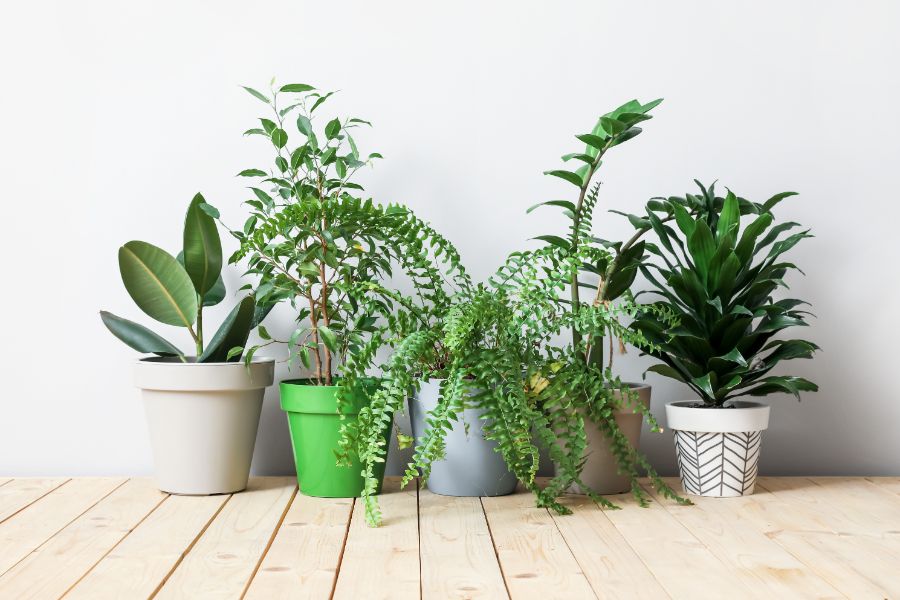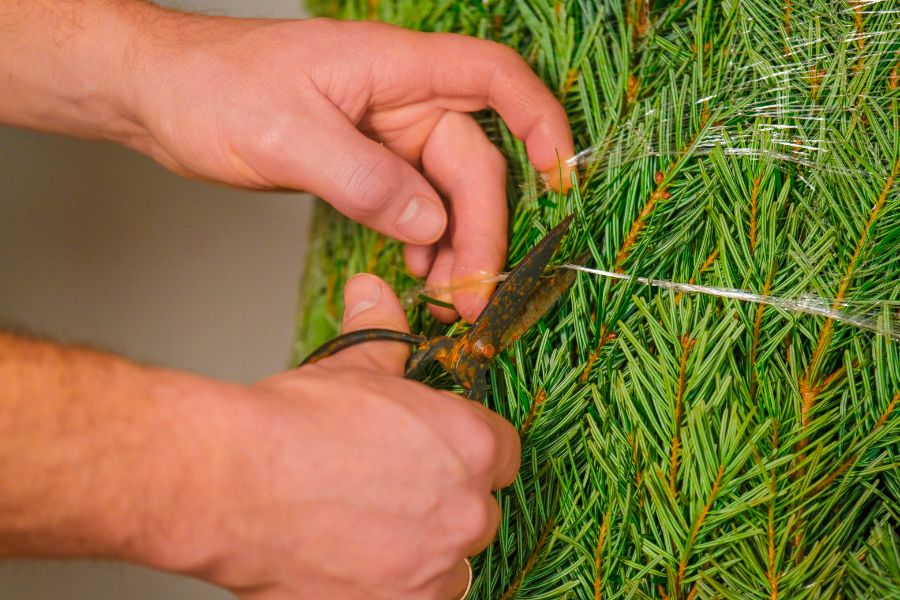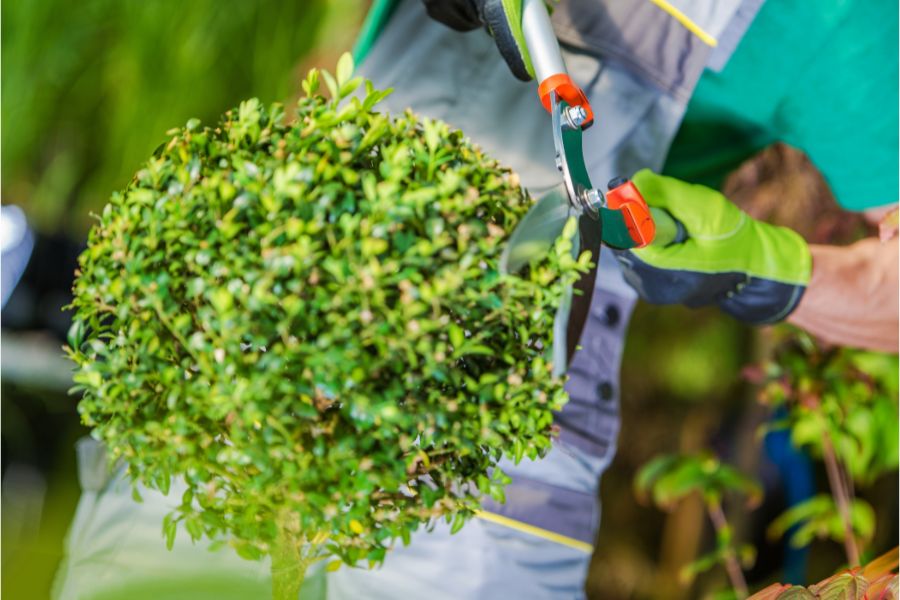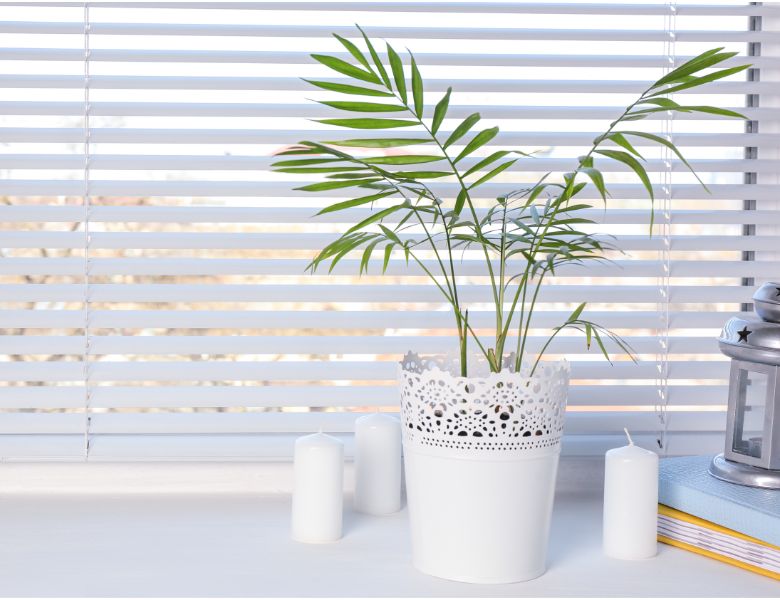Artificial plants, often first encountered during Christmas time, present a fantastic opportunity for year-round interior decoration. If you’ve ever set up an artificial Christmas tree, you already have a foundational understanding of how to handle these faux flora. This article offers a comprehensive guide on how to make your artificial trees and plants look their best.

1. Unboxing Your Faux Flora
Upon arrival, most artificial plants are packaged in rectangular boxes, offering a safe mode of transportation but not exactly replicating the shape of a plant. Like a stowed away Christmas tree, the plant’s branches and leaves are flattened to minimize the required packing space and to prevent potential damage during transit.
To unpack, carefully cut through the tape without damaging the plant. Remove all packing materials and carefully lift the plant by holding the pot, which is the heaviest part. For taller plants, it’s advisable to also grasp the stem or trunk midway for additional support. Place the plant on a flat surface, and if it’s tall, a table or the floor may be suitable.

After unpacking, any protective wrapping should be removed. Straighten any folded top sections and branches to help the plant achieve its full height.
2. Shaping From the Base
At this point, your plant may not resemble the picture-perfect image on the website where you ordered it, but don’t worry – that’s about to change.
Starting from the base, begin to shape your plant. If it’s a leafy plant, like a zebra plant, start by pulling the outer stems away from the central trunk. The leaves on these plants are usually flat but can be curved to look more natural. For larger leaves, shape them using your index finger from tip to stem, moulding them as you go along. Don’t forget, the leaves at the base typically possess a more pronounced curve than the ones at the apex, so mold them accordingly.
For trees, detach branches from the trunk and gradually separate the individual twigs and sprigs from each branch. Shape them appropriately to mimic natural curves. Be firm but gentle while shaping your plant, avoiding any damage. If your plant has silk leaves or flowers with creases, a hairdryer on a cool setting can help smooth them out.

3. Examining Your Plant
Once you’re done shaping your plant, check it from various angles to ensure it appears full and well-shaped. Make any necessary adjustments at this stage.
4. Adding the Finishing Touches
After you’ve shaped your plant, the next step is to decide on its placement and presentation.
5. Choosing the Perfect Pot
The container plays a significant role in a plant’s presentation. While most plants are delivered in plain, small pots, there’s an extensive range of decorative pots available, such as ceramic, wood, terracotta, and basketwork.
It’s crucial to match the pot’s size with the plant. For instance, a large plant in a tiny pot may look awkward and vice versa. If you’re finding that a portion of the plant’s height is concealed within a deep pot, placing some foam or polystyrene at the bottom of the pot can help bring the plant to the desired height.

6. Decorating with Toppings and Dressings
The final step in enhancing the aesthetics of your plant is to dress the compost. Depending on the size of the pot and the plant, you can choose from a variety of dressings such as bark chippings, decorative gravel, pebbles, or even glass pebbles. You can also add a layer of fake moss for a touch of realism.
One might worry about the weight and the volume of material required to fill a large pot. But an effective solution to this issue is to use leftover packing materials such as newspaper or bubble wrap to fill up the pot, adding a thin layer of decorative dressing on top to achieve the desired aesthetic. This method keeps the pot light and reduces the quantity of dressing materials needed.
Artificial plants offer endless creative opportunities to enhance the decor of any space. With the tips provided in this article, you’ll be well on your way to becoming an expert in shaping and presenting your faux flora.
7. Unleashing the Aesthetic Potential of Artificial Plants: Expert Styling and Placement Advice
Artificial plants serve as a versatile tool to breathe life into your space without the hassle of maintenance. The core advantage of these foliage replicas is their adaptability to different spaces and light conditions, a feature that real plants don’t have. You can style them to fit into expansive areas by spreading the branches, or make them suitable for narrow spaces by keeping the branches close-knit.

8. Seamless Placement of Faux Greenery
Artificial trees and plants grant you the freedom to place them exactly where you desire. There’s no need to fret about locations that are too bright or too shady. A petite faux rose can uplift a gloomy corner, while a series of plants on shelves or wall-mounted baskets can accentuate a plain wall. Think about a flowering tree in your sunroom, a faux fruit tree in your kitchen, or a verdant areca palm in your dining room – all of them would look splendid. The charm of a fancy topiary or a bay laurel by the entrance or on the patio is unparalleled.
Remember, while these plants come with UV protection, excessive exposure to direct sunlight might affect the color. Otherwise, you’re free to place them wherever your heart desires.
9. Enhancing Appeal with Light Play
Your artificial plants could come alive with strategic lighting. The charm of your miniature rose can be enhanced manifold with stick-on overhead LEDs, mini spotlights, or a table lamp nearby that bathes the plant in a warm glow.
Tall plants and trees could benefit from spotlights, or a nearby standard lamp or tall uplighter that mimics the shape. Also, consider adding fairy lights to your faux foliage. They aren’t restricted to your Christmas tree! Whether it’s topiary, decorative trees, flowering plants, or hanging baskets, fairy lights can level up the aesthetics. Battery-operated lights offer added flexibility.
10. Adding a Touch of Perfection

Artificial plants come in an assortment of shapes, styles, and colors. They serve as a delightful addition to your home or garden, looking stunning all year round. They easily glam up a room, patio, or outdoor space without demanding your time.
The key to making the most of your faux botanicals lies in presenting them right. Similar to setting a table, draping the curtains, or positioning wall art, shaping your new artificial plants needs a bit of time and effort. Once that’s done, they stay in their perfect shape.
If you’re contemplating investing in artificial plants, you might want to bookmark this page. You’ll find guidance, inspiration, and handy tips for Christmas and beyond. And remember, a gorgeous silk poinsettia won’t suddenly drop its leaves on Christmas morning! Feel free to leave us a comment about your experience with artificial plants and trees.
Hailing from China, FeelReal is a prominent player in the artificial plants industry, offering a vast range of indoor and outdoor decoration products. Our name signifies our commitment to delivering an immersive and realistic experience.


